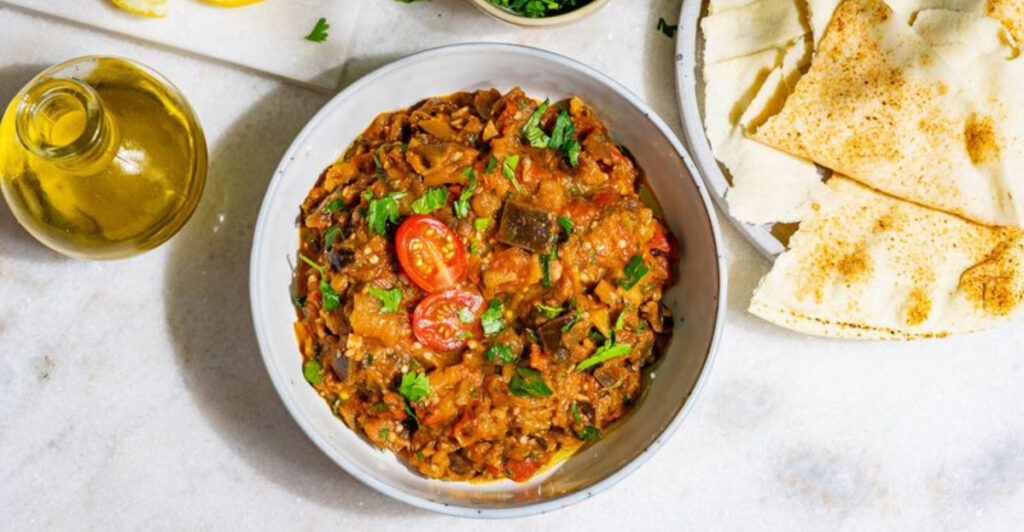Morocco’s food scene is a magical blend of African, Arabic, and Mediterranean flavors that will make your taste buds dance. From bustling street markets to cozy family restaurants, every corner of this North African kingdom offers incredible dishes waiting to be discovered. Food here isn’t just about eating—it’s about sharing stories, connecting with locals, and experiencing centuries-old traditions. Get ready to explore ten amazing Moroccan dishes that will transform your trip into an unforgettable culinary adventure.
1. Tagine (The National Dish)
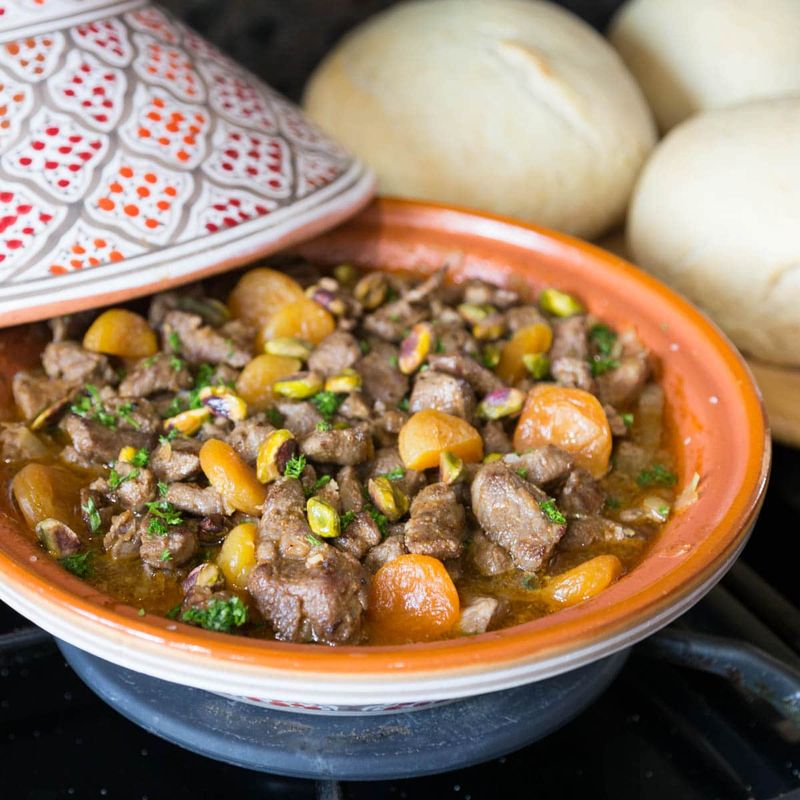
Tagine represents the heart of Moroccan cooking, where tender lamb, chicken, or beef mingles with vegetables and warm spices for hours.
The magic happens in the unique pot design, which creates steam that keeps everything incredibly moist. Each region adds its own twist—some include dried fruits like apricots, while others focus on savory herbs.
Head to Café Clock in Marrakech for a modern interpretation, or find a family-run riad in the medina for the traditional experience. Pro tip: order kefta tagine with spiced meatballs for an explosion of flavors.
2. Couscous (Friday’s Sacred Meal)
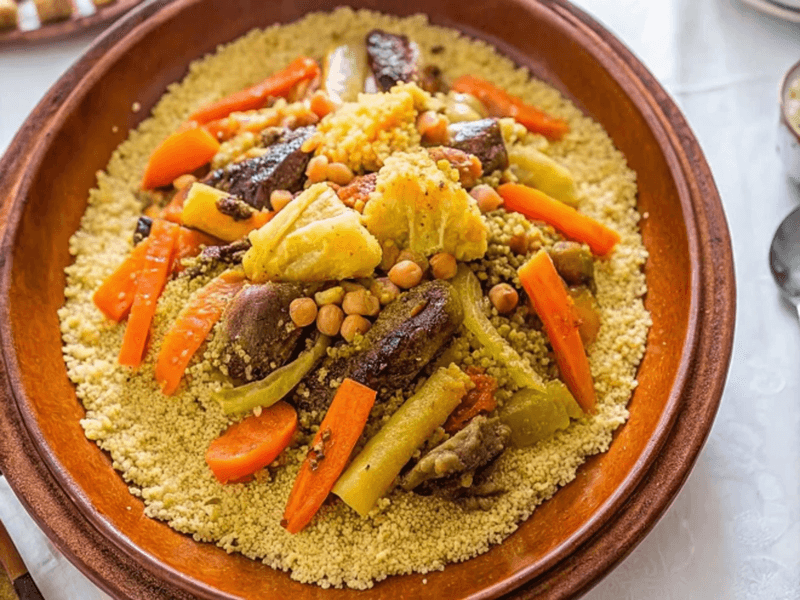
Every Friday across Morocco, families gather around steaming plates of fluffy couscous—a tradition so sacred it brings entire communities together. These tiny semolina grains, perfectly steamed and light as air, create the foundation for a feast.
Real Moroccan couscous takes hours to prepare properly, with each grain rolled by hand and steamed multiple times. The result is nothing like the instant version you might know—it’s delicate, fluffy, and absolutely divine.
Al Fassia in Marrakech serves an upscale version that showcases this dish’s elegance. However, the most authentic experience comes from sharing couscous in a local home, where recipes pass down through generations of Moroccan mothers.
3. Pastilla (Sweet & Savory Pie)
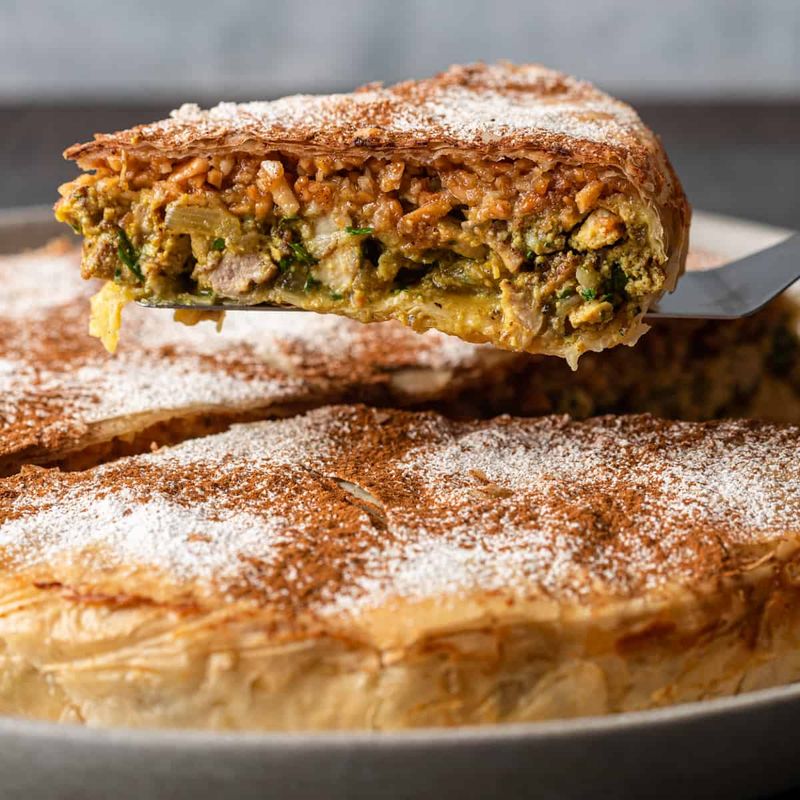
Crispy, paper-thin pastry that shatters to reveal an unexpected combination of savory pigeon meat, crunchy almonds, warm cinnamon, and powdered sugar. Pastilla challenges everything you think you know about flavor combinations.
This ancient dish originated in Andalusia and represents the sophisticated side of Moroccan cuisine. The contrast between sweet and savory creates a taste experience that’s both surprising and addictive.
Restaurant Dar Zellij in Fes serves the most authentic version, where skilled chefs still use traditional pigeon. Pair it with refreshing mint tea to balance the rich, complex flavors. Many restaurants now offer chicken versions for those preferring familiar proteins.
4. Harira (Ramadan’s Beloved Soup)
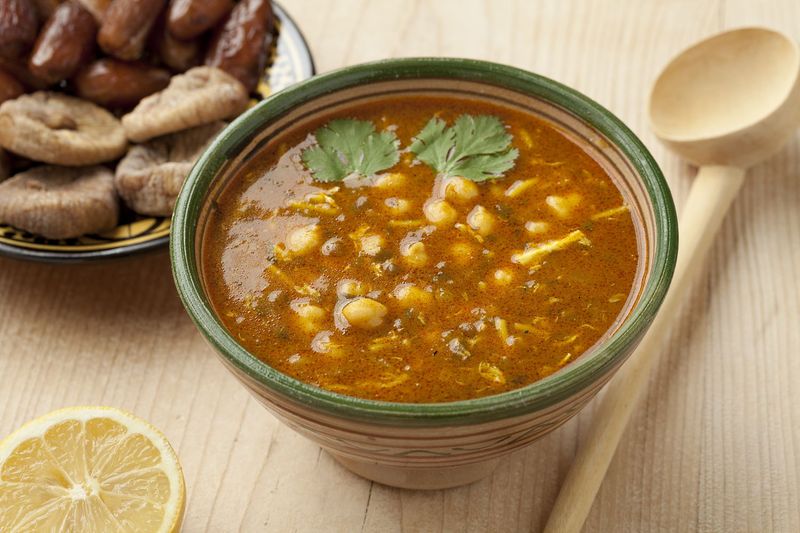
When the call to prayer echoes across Morocco during Ramadan, families break their fast with bowls of harira—a soul-warming soup that’s pure comfort in liquid form. This tomato-based masterpiece combines lentils, chickpeas, tender lamb, and fresh herbs.
The soup’s rich, hearty texture comes from hours of slow cooking, allowing flavors to meld into something truly special. Each spoonful delivers protein, vegetables, and warming spices that satisfy both hunger and spirit.
Street stalls in Casablanca serve authentic versions year-round, while Harira Café in Marrakech offers a refined take. During Ramadan, join locals at sunset for iftar—you’ll experience the soup’s true cultural significance while making new friends.
5. Mechoui (Slow-Roasted Lamb)
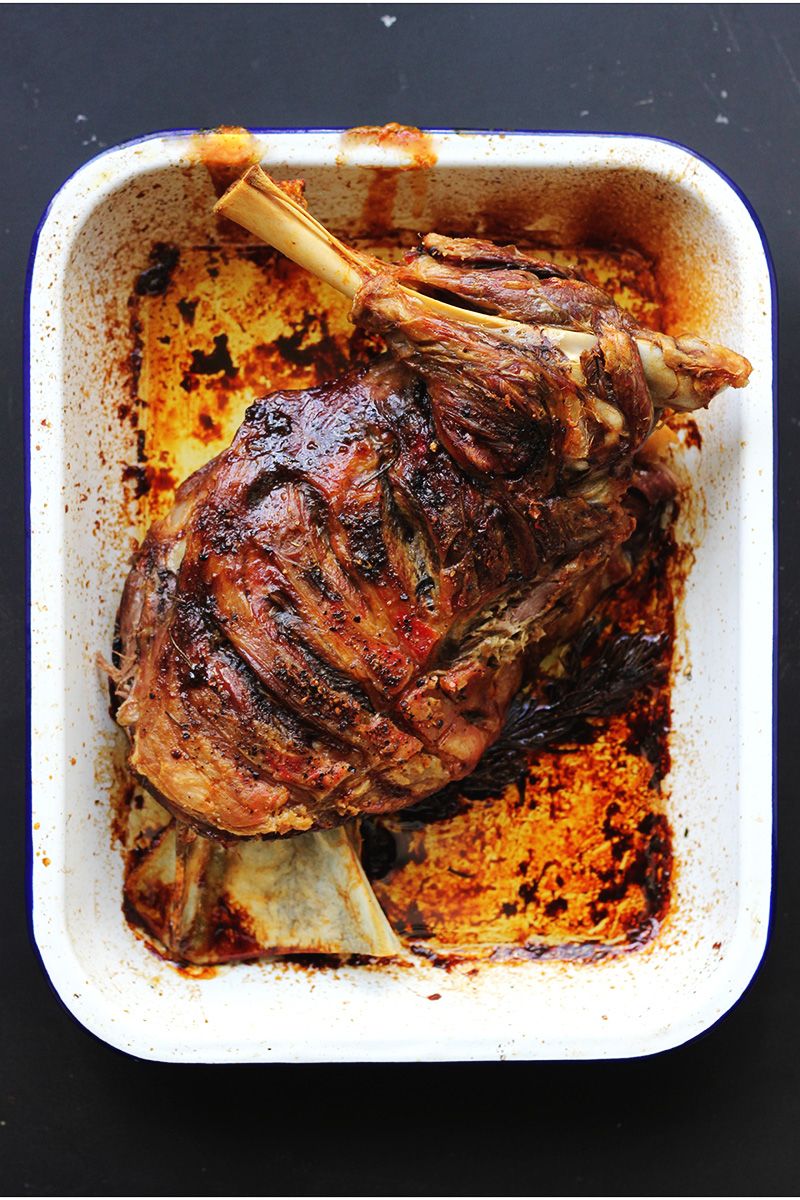
Deep underground pits hold the secret to mechoui—whole lambs that roast slowly for hours until the meat becomes so tender it falls off the bone with a gentle touch. This ancient cooking method creates flavors that modern ovens simply cannot match.
The lamb emerges with crispy, golden skin hiding incredibly juicy meat inside. Traditional preparation involves burying the meat in hot coals, creating a smoky flavor that penetrates every fiber.
Mechoui Alley in Marrakech features tiny stalls specializing exclusively in this dish. Eat like locals do—with your hands, seasoned with cumin and salt. The communal experience of sharing mechoui connects you directly to Morocco’s nomadic heritage and hospitality traditions.
6. Zaalouk (Eggplant & Tomato Dip)
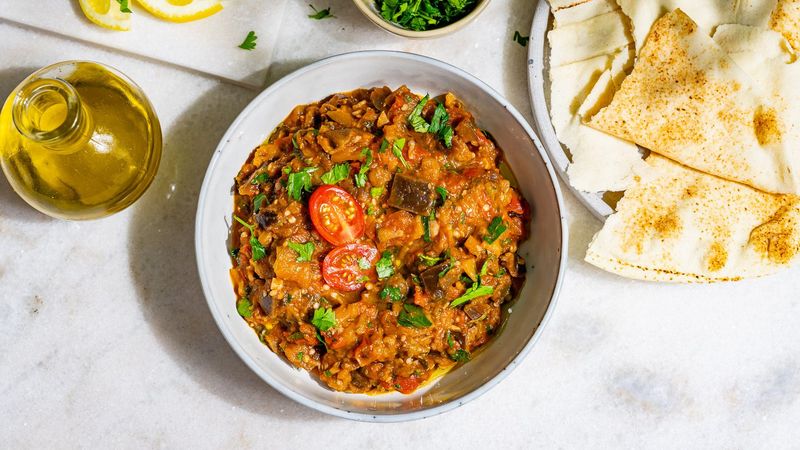
Smoky eggplant meets sweet tomatoes in zaalouk, a rustic dip that captures the essence of Mediterranean Morocco. Fire-roasted eggplant gives this humble dish its distinctive smoky flavor that pairs perfectly with warm, crusty bread.
Local cooks char eggplants directly over flames until the skin blackens and the flesh becomes creamy. Mixed with fresh tomatoes, garlic, and aromatic spices, zaalouk transforms simple ingredients into something extraordinary.
Market stalls throughout Morocco serve fresh zaalouk daily, often alongside other small plates. Ask vendors for extra bread—you’ll want to savor every last bit. Adjust the heat level with harissa, Morocco’s famous chili paste, to match your spice tolerance perfectly.
7. B’ssara (Fava Bean Soup)
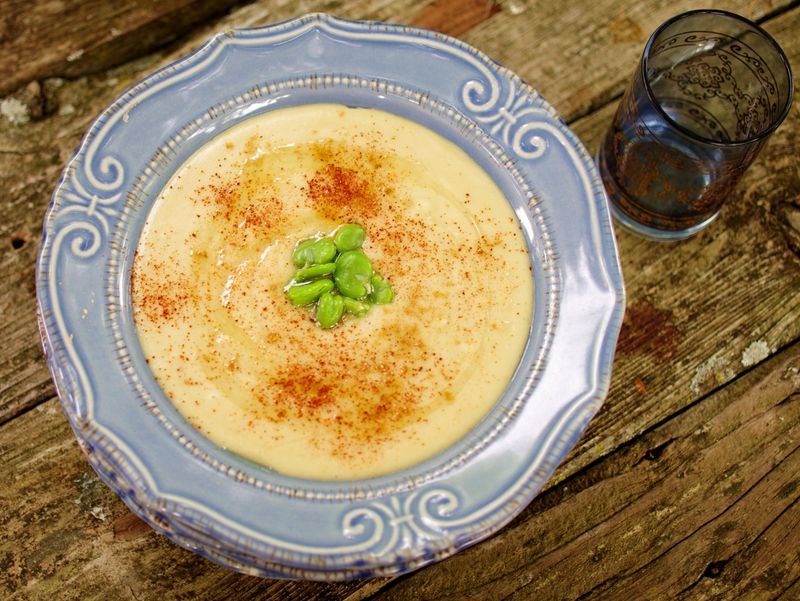
Before dawn breaks over Morocco’s ancient cities, street vendors begin ladling steaming b’ssara into bowls for early risers seeking hearty breakfast fuel. This creamy fava bean soup represents Morocco’s most beloved comfort food.
Dried fava beans cook slowly until they break down into a silky, protein-rich base. A drizzle of golden olive oil and a sprinkle of earthy cumin transform this simple soup into morning magic.
Dawn vendors in Fes and Tangier serve the most authentic versions, often for less than a dollar. The soup’s filling nature makes it perfect fuel for exploring Morocco’s winding medinas. Locals often eat b’ssara with warm bread, creating a complete, satisfying meal that costs almost nothing.
8. Msemen (Flaky Moroccan Pancake)
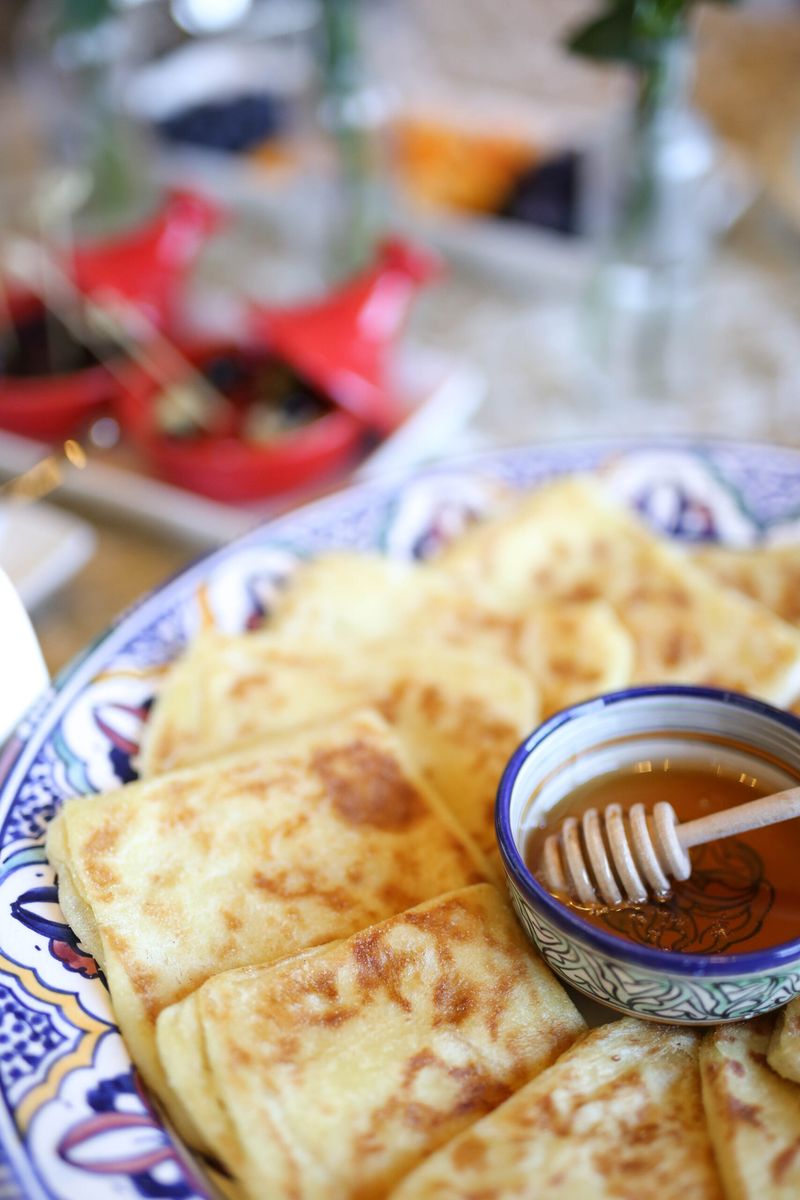
Watching skilled hands stretch msemen dough into paper-thin sheets before folding and griddling them into golden, flaky squares is pure kitchen poetry. These buttery, layered flatbreads represent Morocco’s answer to the perfect breakfast pastry.
Each msemen contains dozens of delicate layers that separate when cooked, creating a texture that’s simultaneously crispy and tender. The secret lies in the folding technique passed down through generations of Moroccan women.
Hajja Fatima in Essaouira serves fresh-off-the-griddle msemen that practically melts in your mouth. Spread honey or amlou (Morocco’s almond butter) on top for sweetness. Pair with strong Moroccan coffee for the ultimate morning combination that locals have enjoyed for centuries.
9. Maakouda (Spicy Potato Fritters)
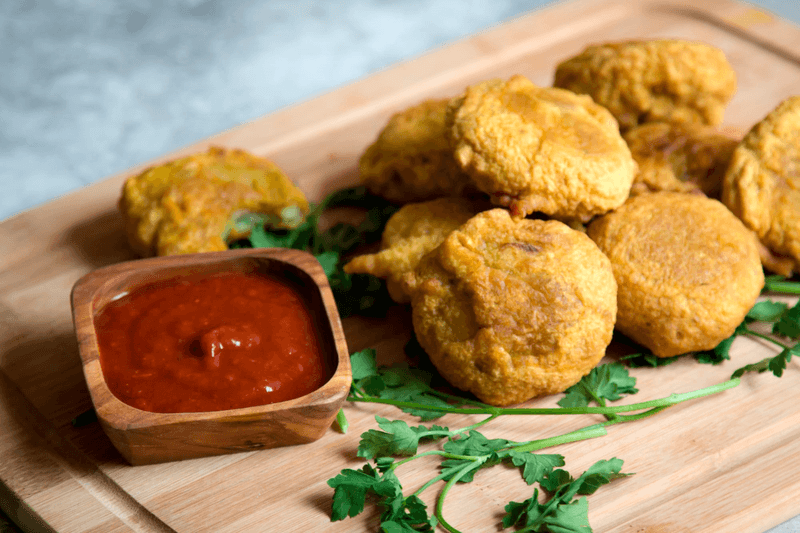
Golden potato patties sizzle in hot oil while hungry crowds gather around street carts, drawn by the irresistible aroma of maakouda. These crispy fritters pack serious flavor into every bite, especially when stuffed inside crusty Moroccan bread.
Mashed potatoes mixed with herbs and spices get shaped into patties and deep-fried until the outside becomes golden and crunchy. The contrast between the crispy exterior and fluffy interior makes maakouda absolutely addictive.
Jemaa el-Fnaa night market in Marrakech offers the best atmosphere for trying maakouda alongside other street foods. Order yours “maakouda b’harissa” if you want extra heat from Morocco’s famous chili paste. The sandwich version makes a perfect quick meal while exploring the medina.
10. Chebakia (Honey-Sesame Cookies)
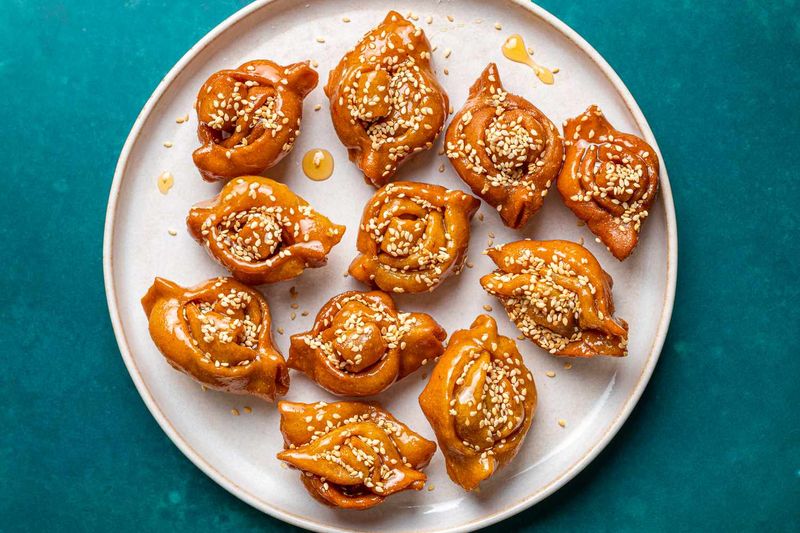
Intricate flower-shaped cookies emerge from bubbling oil before taking a luxurious honey bath and rolling in sesame seeds. Chebakia represents Morocco’s most beautiful and delicious sweet, especially during Ramadan celebrations.
Creating these delicate cookies requires incredible skill—dough gets twisted into complex rose patterns before frying. The honey coating adds sweetness while sesame seeds provide a delightful crunch that complements the tender interior perfectly.
Patisserie Al Jawda in Rabat creates exceptional chebakia, though any bakery during Ramadan will have fresh batches. These cookies make wonderful edible souvenirs that capture Morocco’s sweet traditions. The intricate shapes and golden color make them almost too beautiful to eat—almost.

